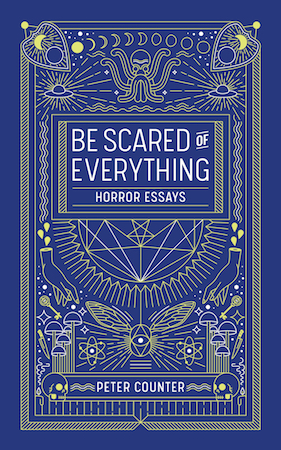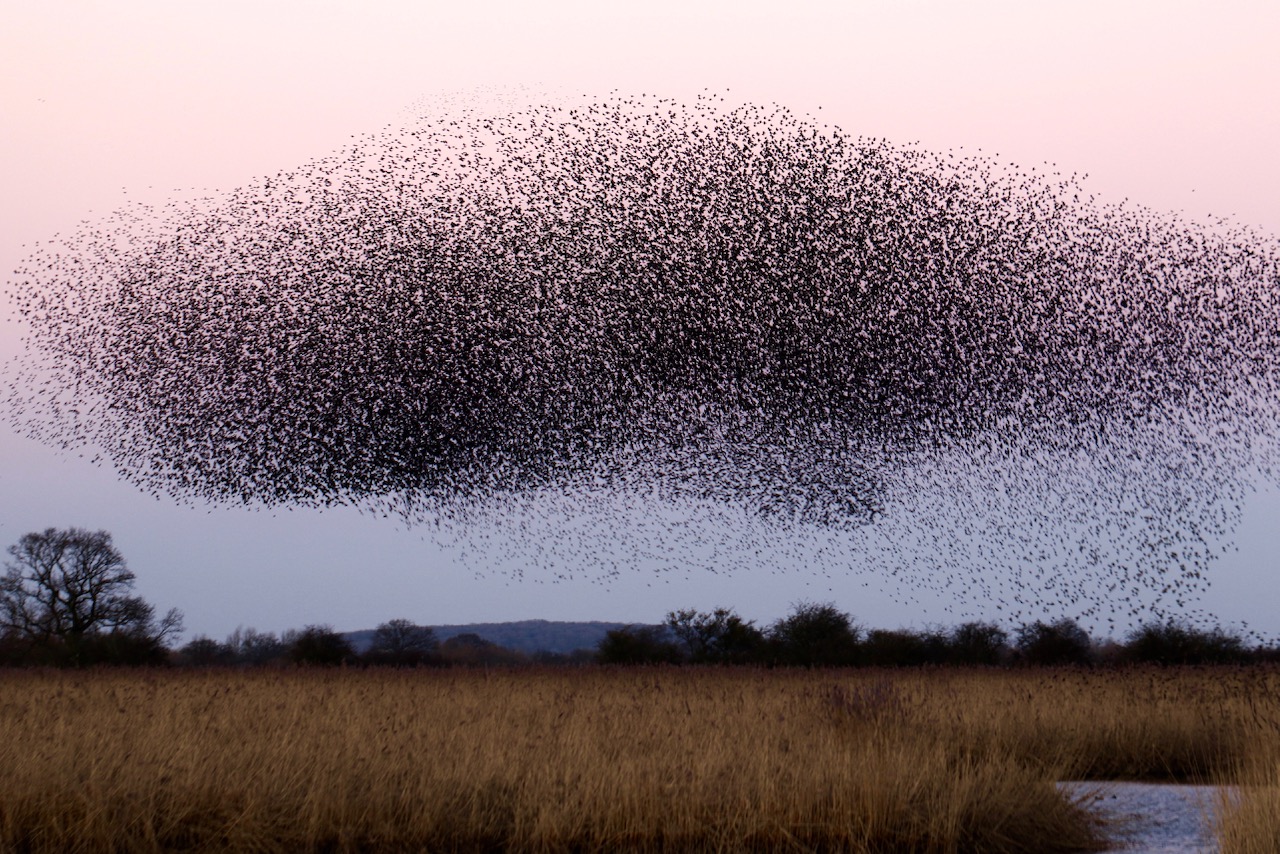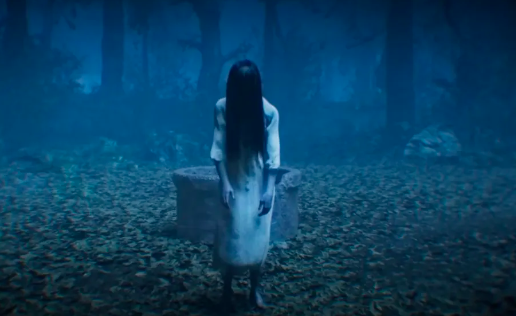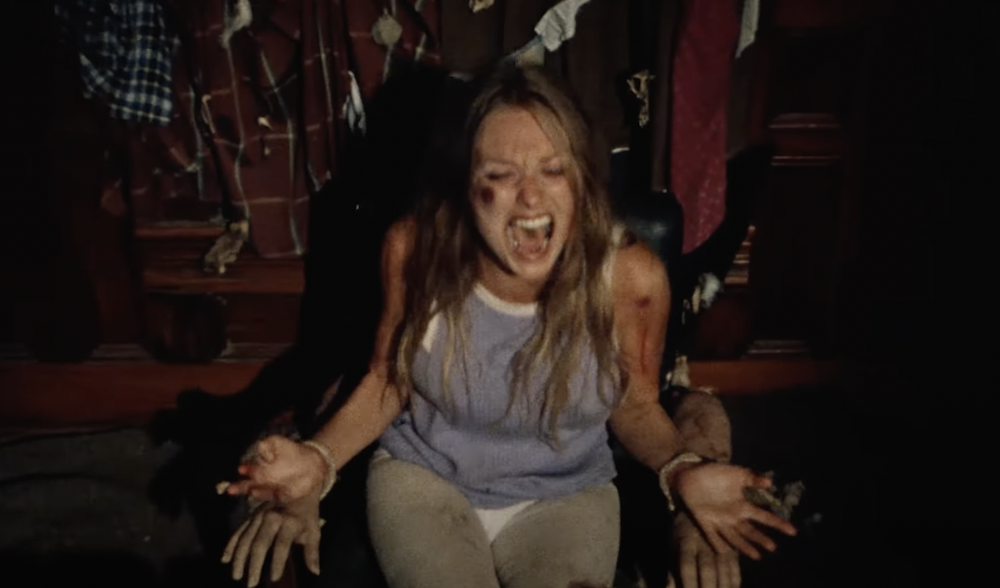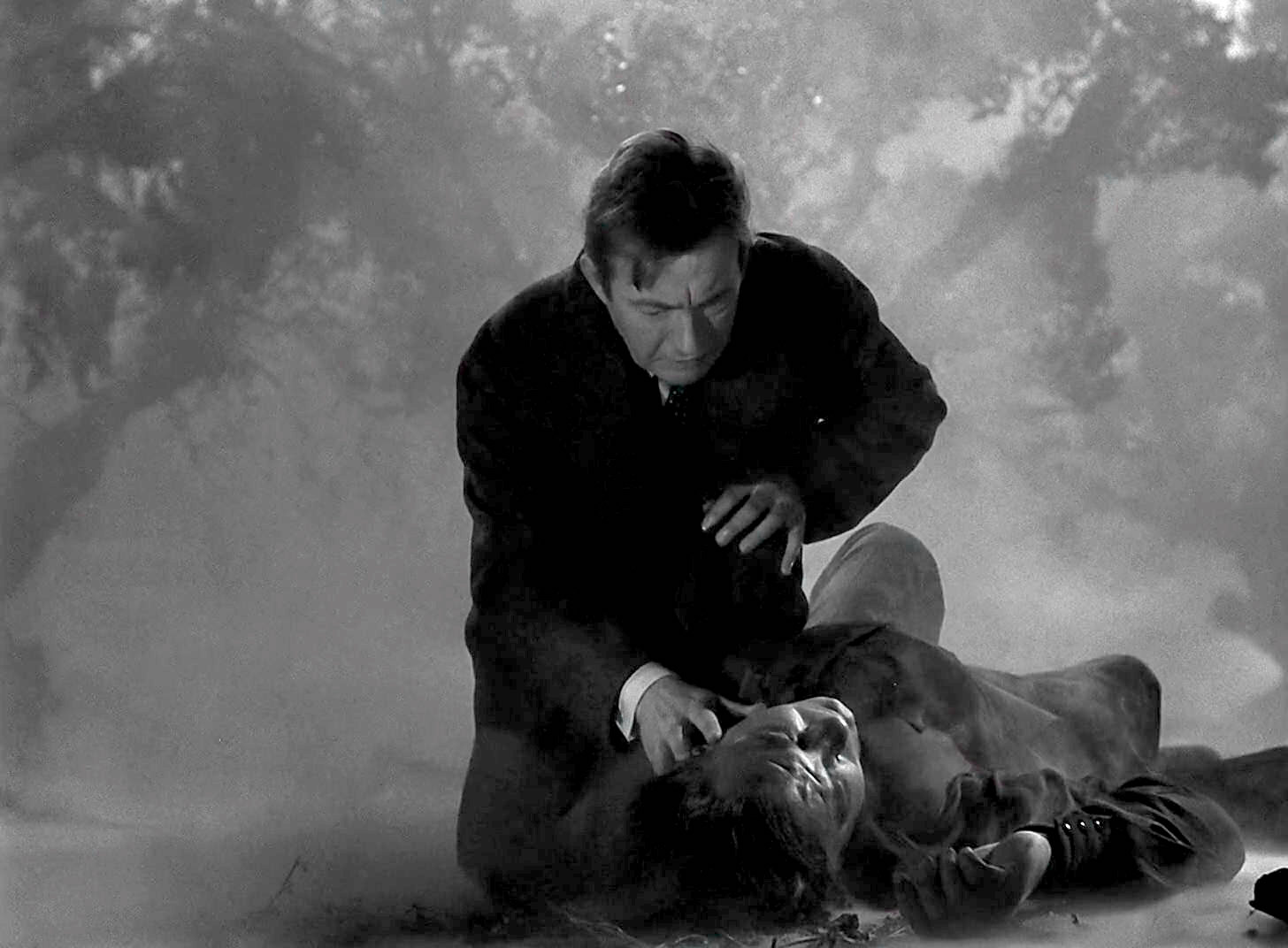Books & Culture
Here’s Why We’re So Obsessed With Zombies
What are we really talking about when we tell stories about the living dead?

Gwen asked if I’d kill her. I had to think about it. The two of us sat in a theatre in downtown Toronto, paper programs in our laps. Black walls, black curtains, black metal legs supporting grey plastic chairs, all lit by the white glow of the house lights. The kind that bring out the red in your cheeks. Blood vision.
“I could do it,” I said. “Emotionally, I think I could.”
I took silent inventory. With me, I had a messenger bag containing a notebook and a bottle of red wine. The pockets of my jeans were empty, save for my old leather wallet. My keys, a ticket stub, a small black cellphone, and a handful of unused tissues cluttered the various compartments of my theater-school-grade corduroy blazer. I was unarmed. “But I don’t think I have anything that would really help me with the dirty work.”
“You can kill a zombie with your hands,” she said. “You do karate.”
I pictured the hypothetical scenario. A raspy moan, Gwen’s eyes covered in the instant cataracts of undeath, mouth gaping with angry eyebrows. She’d go for my exposed flesh first, probably—my face and neck. I’d guard myself, either through the automatic reflex of a karate high block or by cartoonishly palming her head to keep her at bay, the Bugs Bunny to her flesh-eating chicken hawk. Honestly considering my abilities and the implements at hand, I couldn’t imagine any way to remove Gwen’s head or destroy her brain.
Considering my abilities and the implements at hand, I couldn’t imagine any way to remove Gwen’s head or destroy her brain.
“I don’t know. Is karate even enough?” I said. “I’d have to run.”
Gwen raised an eyebrow. People crowded near the edge of the stage, looking up at the risers, squinting and doing basic math, trying to find a place to squeeze their party in with the rest of us spectators.
“Let’s say you had something,” she said. “Let’s say you had a bat or a shovel. Let’s say you could definitely do it.”
I asked where she was headed with this. Judging by the densely packed seating, we didn’t have a ton of time for zombie talk before the curtain’s rising.
“Okay,” she said. “If I attack you first, having not bitten anyone to spread the zombie virus, and you karate me back to death right here, will anyone believe you did it to save the world? Or will they all think you’re a murderer?”
Everyone in the theatre sat, shifting, murmuring, and turning off their phones. The collective noun is audience, crowd. But I was thinking about hordes.
“I’m just saying, the smart thing to do is let the situation get a little out of hand,” said Gwen. “Not too out of hand. Not 28 Days Later out of hand. Just enough that tomorrow’s headlines contain the word ‘infected’ instead of ‘murder.’”
The lights began to dim. For a moment, a couple hundred bodies sat in utter darkness.
“This is probably a good time to tell you I’m coming down with a fever,” Gwen whispered. “Remember, let it get a little out of hand.”
“What if you bite me?”
“I don’t care, I’m already dead.”
We talk about zombies to talk about each other. In pubs, at parties, in theatre audiences waiting for plays to start, we imagine the undead uprising in present tense. In a hypothetical survival scenario, your interests, obsessions, and special skills take on heavy significance. The summer job you had landscaping could make you the chainsaw-wielding splatterpunk who saves her friends in a cloud of gas fumes and blood. Time served on your high school baseball team might elevate you to the José Bautista of blunt-force head removal. Practical firearms experience accrued on a hunting trip with your uncle can cast you as Annie Oakley in St. John’s Revelation.
We talk about zombies to talk about each other.
As an old millennial, of the cohort who started surfing the web around age nine, I learned to write personality profiles for my digital self before learning the cardinal directions in school. Chat rooms, pop culture forums, and instant messenger programs like ICQ required me to socialize without a body. Like other people my age, I built digital avatars out of song lyrics and self-portraits. Screen name, age, country, favourite movie, favourite song, inspirational quote, uploaded image—disclosure of this data is an essential first step in communication for people who came of age during the rise of internet society, who spend most of our social lives in collectively imagined non-corporeal spaces. That’s why zombies are such an appealing conversation topic. A zombie apocalypse discussion is profile building for the meatspace. Agreeing to a set scenario with high stakes and an internal logic established by film, TV, video games, and past conversations, we define ourselves in opposition to the undead. We laugh, we drink, and together we agree that in a world consumed by viral walking death, the people we know and love will survive by virtue of our describable utility.
Because zombies are non-human, non-living, and unable to list their hobbies in order of practicality, the shambling corpses are barely part of the conversations they inspire. Generally, actual zombie talk begins and ends with taxonomy. If we’re really going to discuss a survival plan, we need to know what kind of monsters we’re running from. Are we dealing with classic slow zombies or a newfangled strain of rage zombies that can run? Do their bites quickly transform living victims into card-carrying members of Club Z or are we imagining a situation in which infection only means resurrection after a less supernatural death? These questions, along with the origin of the zombification vector—biomedical research gone wrong, trendy anti-aging cream applied too liberally, a novel coronavirus—help define the survival logic of the discussion. Everything else is about being alive together and staying that way.
Your zombie apocalypse profile is constantly changing with your interests, attitudes, and values. Physically active hobbies usually take up the first bits of conversation. The knee-jerk reaction is that a zombie apocalypse privileges those who can pulverize a skull. But close-contact melee with zombies is a losing battle. It’s like beating back the rising tide with a crowbar.
It only takes a few minutes to realize that survival is about creatively cooperating to make the best of the worst possible situation. Identifying friends and acquaintances with first-aid training leads to recollected adventures in babysitting. Finding shelter and foraging for food evoke shared memories of hiking, camping, and hunting. At one point, someone inevitably suggests commandeering a boat and waiting out the apocalypse on the water. This person will share stories of sailing, powerboating, or working at a marina over teenage summers. The conversation will progress, trust will emerge, and those of us with chronic medical conditions will ask if the survival party minds stopping at a pharmacy to loot EpiPens, inhalers, or insulin.
Your zombie apocalypse profile is constantly changing with your interests, attitudes, and values.
I am a lifelong martial artist, which usually puts me on guard duty. I graduated university with a performance-heavy theatre degree, which is generally thought to be useless unless you count the fact that it’s probably the reason we’re talking about zombies in the first place. I have asthma and a chronic back injury. My favorite band is the White Stripes. My favorite film is The Blair Witch Project. My inspirational quote is a haiku by Kobayashi Issa: “O snail / Climb Mount Fuji, / But slowly, slowly!” Please add me to your zombie survival network.
Zombies are the monster we talk about because the stories that focus on them use the language of breaking news and scientific discovery in a bid for verisimilitude. Mysticism, meet biohazard, meet broken quarantine, meet 24-hour news coverage and presidential addresses and riots. Exorcists, meet researchers. Demons, meet germs.
I was in Grade 9 math class on September 11, 2001. My teacher, Mr. Leonard, didn’t tell my class why school was suddenly cancelled, so it was only after being ferried home on a school bus, turning on the TV, and flipping to the all-news channel that I became aware of the mayhem. Sitting alone on the dusty grey couch in our sunlit family room, still wearing my school uniform, I saw the images we’ve all watched on repeat. Planes flying into skyscrapers. People jumping from windows. Buildings I’d only ever seen depicted in fiction collapsing. After the initial impacts, in that uneasy time when any horrible thing seemed possible, almost every channel replayed the footage for viewers just tuning in.
Something important and world-changing is happening, I thought, and it made me sick with guilt. Watching the news that day was the first time I understood the World Trade Center buildings as real, and as I saw them tumble over and over, I felt a mortifying, horrendous thrill. This could be the end. I felt flattered to be alive, witnessing violent history. The newscasts flashing on my family’s tube television taught me the vernacular of a world falling apart.
The zombie films of the early 2000s adopted the visual language of terrorist attack coverage as a shorthand to illustrate how the real undead threat ought to feel. Danny Boyle’s seminal 28 Days Later, released only thirteen months after the Twin Tower catastrophe, begins with the images of violent news footage prior to the film’s inciting outbreak. Its second sequence, which takes place after the evacuation of Great Britain, features actor Cillian Murphy silently walking through a decimated London, juxtaposing recognizable landmarks like Big Ben with the post-9/11 iconography of a wounded metropolis, most notably a makeshift memorial wall covered in drawings, letters, and photos of victims. The 2004 remake of Dawn of the Dead, written and directed by superhero filmmakers James Gunn and Zack Snyder, respectively, goes all the way with its allegory, using staged news footage of military deployments firing automatic weapons into swarms of bodies, and White House press briefings in which politicians are unable to confirm whether the victims of a spreading pathogen are in fact living or dead.
I’m not saying 9/11 invented the zombie apocalypse. That’s reductive. But it did familiarize the media language of mass mayhem that’s used to make zombie outbreaks seem more realistic in entertainment. Boyle and Snyder showed me what the news coverage would look like if monsters attacked instead of Al Qaeda. Their ability to self-justify their horror brought it closer to the border of potential reality.
Two years after Snyder’s Dawn of the Dead remake made malls the place to be for the apocalypse, zombie self- justification was bolstered even further by non-fiction. The eighth episode of the BBC documentary series Planet Earth, titled “Jungles,” captured a real-life, albeit diminutive, zombie apocalypse in high-definition film.
“These bullet ants are showing some worrying symptoms,” narrates David Attenborough over close-up shots of an insect in distress. “Spores from a parasitic fungus called Cordyceps have infiltrated their bodies and their minds.” The camera follows the fate of one ant, which, compelled to climb upward by the fungal filaments nesting in its body, clamps its mandibles into the stem of a plant before its head erupts, producing a white tendril that rains spore particles on the colony below. Bullet ants caught under the falling dust are doomed to the same fate, playing host to zombie mushrooms as mycelia manipulate their nervous systems. “The fungus is so virulent,” says Attenborough, “it can wipe out whole colonies of ants.”
As you’d expect, Cordyceps supercharged the zombie conversations of the Planet Earth era. The realistic images of disaster news coverage showed us what a zombie apocalypse looked like after that first fateful bite, but until Planet Earth, the origin had to be speculative, some sort of fantasy virus. Cordyceps gave us a clear beginning, a real zombifying infectant only one cross-kingdom jump away from fulfilling the prophecy of our catastrophic fantasies. “Have you seen Planet Earth?” someone would say after the clink of pint glasses. “How about those zombie ants?” Ten minutes later, the table is three weeks into a sustainable post-apocalyptic survival plan and more intimately connected than most first cousins. In the zombie apocalypse, you build a new family.
People we don’t know might as well be bad weather. They might as well be zombies.
With the missing piece of a realistic vector in place, zombie fiction finally possessed all the tools for a fully plausible secular apocalypse, leaning closer to speculation than fantasy. In 2013, video game developer Naughty Dog released The Last of Us, a narrative-driven experience that takes players from the eve of a human Cordyceps outbreak and the cold military response straight through to the bleak conclusion that humanity might not be worth saving. Featuring real motion-capture acting, touching voice performances, and easily the best script written for a major studio-developed video game, The Last of Us is overgrown with verisimilitude, achieving the exit velocity required to escape the gravity of horror genre and video game stigma.
The Last of Us, many critics argued, was not a game. One didn’t so much play The Last of Us as they endured it. The violence was too realistic, requiring the player to murder human beings with bricks or improvised petrol bombs, for no reward other than safety; no points, just survival. The Last of Us aspires to realism first, horror second, and in doing so reveals how meaningless those distinctions actually are. It’s the only zombie story that can make me cry in its final moments. It’s about the horrible things we do for family. People we don’t know might as well be bad weather. They might as well be zombies.
“I want you to cut it off,” said Bruce. “Dave can use the fire axe. But I’m probably going to pass out. I think if we make a tourniquet first, that might help. But we have to cut off my arm.” He looked at me from across a table covered in paper, wooden game pieces, and a map of the Royal Ontario Museum. “I show them my arm.”
“Bruce shows you his arm,” I confirmed. “The bloody teeth marks are surrounded by dark bruising. Deep blue and black veins stretch out from the wound, almost reaching his shoulder.”
As the game master of the tabletop role-playing game session, I maintained distance. The umpire and living statistical engine of the imaginary zombie apocalypse, I brought my best friends—Katie and her fiancé Dave, Emma and her pre-med student cello teacher, the soon-to-be-armless Bruce—on this field trip of nightmares. I couldn’t participate in the decision. I was there to watch and roll dice—and confirm or deny potential actions while the closest thing to a doctor at our table argued for an unanesthetized amputation.
“Can’t we do anything to numb the pain?” asked Katie. “You can knock me out. Then I won’t flinch.”
“None of us know how to knock you out,” said Emma. “This isn’t TV. If we hit you in the head, you might die.”
“Hold on. Hold on,” said Dave, hands out over the table as if physically pushing the rising emotions down onto the game pieces. “Can I just pause for a second? Peter, we don’t know enough to call these zombies. Right?”
I had to think about it. I consulted my notes. “There are similarities. Obviously.”
“This is a bad idea,” said Emma, sitting farther away from the table.
“Yeah, I don’t want to do this,” said Katie. “It’s my arm,” said Bruce.
And it went on like this.
Outbreak: Undead bills itself as a zombie survival simulator. Available to order as a couple of hardcover books from one of the nerdier corners of the Internet, it’s a comprehensive set of probability charts, lists, timetables, and tips on how to facilitate a fun and collaborative time imagining the end of the world. Devised by King of the Nerds contestant and dragon-enthusiast Ivan Van Norman, Outbreak: Undead is appealing because it helps apply rules to zombie apocalypse conversations. Personal profile building meets the aspirational realism of the zombie genre itself. A personality quiz translates every participant’s fitness ability, emotional capacity, and mental aptitude into statistical character sheets, and the game master handles the larger narration while dice take on the role of luck.
Emma, Katie, and Dave convinced Bruce to keep his arm. Even if they conceded that they were facing off against real-deal zombies, they couldn’t possibly know the underlying logic of whatever was causing Torontonians to hunger for the flesh of the living. Recognizing the zombie apocalypse is not understanding the zombie apocalypse. The mental gymnastics required to come to this conclusion still impress me—playing a game designed to simulate a zombie apocalypse, they pretended they didn’t know it was the zombie apocalypse until they’d accrued enough empirical evidence to make the comparison, only to deduce that whatever they were experiencing might not be the zombie apocalypse after all. It was Olympic-level suspension of disbelief.
I designed this armageddon, so I knew that eventually the black veins would stretch all the way to Bruce’s heart, killing him. And if his friends didn’t destroy his brain, or remove his head, or dissolve him in acid, or do something equally obliterating, he would return, no longer Bruce but a monster with his face.
Zombie talk is a way of painting our modern fears of annihilation with a bloodless coat of grey.
Before any of that could happen, their party was ambushed. As they attempted to escape onto Bloor Street through the broken glass of the museum entrance, three shambling ex-urbanites descended on Dave. He swung his axe; I rolled the dice. Two attackers stumbled back, but the third sunk its teeth into Dave’s neck. Katie and Emma blinked back tears and Bruce’s face sunk. Dave let out a deep breath. These four people had talked so many times about the undead end of the world as a hypothetical, but now words meant action, and action always means consequence. The fantasy fell apart. We only played Outbreak: Undead once more after that. Then we stopped talking about zombies altogether.
Zombie talk is a way of painting our modern fears of annihilation with a bloodless coat of grey. Self-justification animates those fears, makes them shuffle, and moan, and bite. By treating the zombie apocalypse as real in our conversations, we tacitly give ourselves permission to associate real disasters like bombings, and climate change, and economic collapse with fiction. All of those real destroyers of life are, after all, what the walking dead represent. They are the things that happen to everyone else by virtue of being on the wrong side of the camera. By talking about zombies, we drag them into our world, diminishing the border between fantastical death and the chaos that could end everything right now.
As I type these words, in the spring of 2018, an Ebola outbreak is killing people in the Democratic Republic of Congo. The last time the deadly microbe claimed human lives, killing 11,359 people between 2013 and 2016, the international epidemic was reported through the comparative lens of AMC’s horror serial The Walking Dead and resulted in viral zombie hoaxes on the Internet. My Twitter feed is filled with the images of the Congo quarantine, interspersed with news of the latest US school shooting—the third this year, which resulted in the deaths of children. Unimaginable suffering populates my computer monitor, and while it’s sickening and terrifying, it only feels half real. I have a mental block filtering the news through the genre tropes of horror films that rely on the same imagery of blood, tears, and biohazard warning symbols. Real danger is tempered by fantastical excitement, and what I’m left with is a sensation of unearned safety.
By talking about zombies, we drag them into our world.
I have my browser open to YouTube, playing a video of Ronald Poppo, recorded a year after he had the flesh chewed from his skull. Poppo is famous for being the homeless survivor of the Miami cannibal attack in 2012. One year before the release of The Last of Us, a naked Floridian by the name of Rudy Eugene accused Poppo of stealing his Bible. Eugene then beat Poppo senseless, removed his pants, and ate the unconscious man’s face. A police officer shot Eugene dead, saving Poppo, but not before the cannibal consumed the poor man’s eye, along with almost all the skin between his mouth and the crown of his skull.
In the video I’m watching, Ronald Poppo is playing guitar, having received medical treatment and various therapies. He has no eyes, and the smooth skin above his mouth does little to hide his bone structure. He is half skeleton, transformed by a bite. It’s easier to imagine Poppo as a living reminder of a near-apocalyptic outbreak, to imagine that the police officer who shot Rudy Eugene saved the world. But as Poppo puts down his guitar and extols the virtues of the social programs that literally saved his life, he doesn’t use the Z word. He is not the lone survivor of a one-man undead apocalypse. He’s just a survivor. To liken his trauma to the plot of a horror film feels exploitative. It feels disrespectful. But it also feels comfortable, much more so than admitting that what he experienced was simply the chaos that permeates human existence. That at any moment, the cameras could turn to me as a naked stranger dives teeth-first into my face, or as I join the panicking masses in the aftermath of a terrorist attack perpetrated by an angry white gun owner, or as I get sick from an ancient microbe and bleed to death from the eyes, nose, and anus.
Even as I write down those potential realities, trying to imagine each one in terrible detail, they remain as hypothetical as a zombie outbreak. Technically, I am more likely to be consumed by the terrors of human conflict, with its tanks, and its bombs, and its guns. But in my head, it’s all just as real as getting bitten, killed, and resurrected by my friend Gwen as we settle in to watch a play in a crowd of strangers.
“Please Add Me to Your Zombie Survival Network” appears in the essay collection Be Scared of Everything, by media critic Peter Counter, published by Invisible Publishing.




